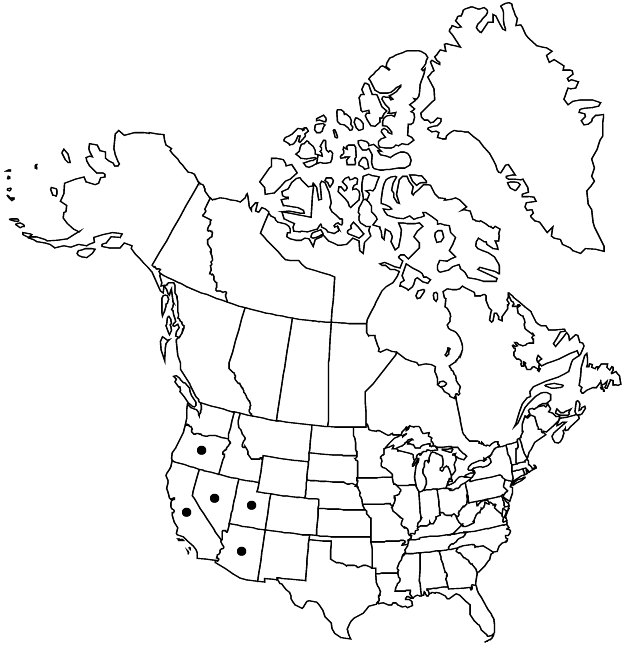Eriogonum pusillum
Proc. Amer. Acad. Arts 8: 184. 1870.
Herbs, spreading, annual, 0.5–3 dm, glabrous, greenish, grayish, or reddish. Stems: caudex absent; aerial flowering stems erect, solid, not fistulose, 0.2–0.8 dm, glabrous except for few glands proximally. Leaves basal; petiole 1–3 cm; blade oblong-ovate to round, 0.5–2.5(–3) × 0.4–2(–2.5) cm, densely white-tomentose abaxially, floccose to subglabrate and greenish adaxially, often with some glandular hairs, margins plane or rarely crenulate. Inflorescences cymose, mostly open, 5–25 × 05–25 cm; branches glabrous; bracts 3, scalelike, 1–3 × 1–2 mm. Peduncles erect, mostly straight, slender, 0.1–5(–7) cm, glabrous. Involucres campanulate, 1–1.5(–1.7) × 1.5–3 mm, glandular-puberulent; teeth 5, erect, 0.4–0.7 mm. Flowers 1–1.7 mm in early anthesis, becoming 1.5–3 mm; yellow in early anthesis, becoming reddish yellow to red, glandular; tepals dimorphic, those of outer whorl oblong-elliptic to obovate, those of inner whorl oblong; stamens included, 1–1.5 mm; filaments mostly glabrous. Achenes dark brown, usually lenticular, 0.6–0.8 mm, glabrous. 2n = 32.
Phenology: Flowering Feb–Aug.
Habitat: Sandy flats, washes, and slopes, saltbush, greasewood, creosote bush, and sagebrush communities, pinyon and/or juniper woodlands
Elevation: 70-1300(-1600) m
Distribution

Ariz., Calif., Nev., Oreg., Utah.
Discussion
Eriogonum pusillum is common to abundant but rarely weedy. It is found mainly in the northern Mojave Desert and in the Great Basin of the Intermountain West of California and Nevada, extending just into southeastern Oregon, western Utah, and northwestern Arizona. It supposedly was found near Wickenburg in Maricopa County, Arizona (M. E. Jones s.n., 5 May 1903, POM), well out of the known range of the species today. The San Benito River canyon site in San Benito County, California (Mason 5543; UC), also is notably disjunct, and although the species has not been recollected there, that location record is more reliable. The Plumas County record is based on an 1880 Austin collection (NY), and the location should be regarded as questionable.
Eriogonum pusillum is used as a food plant by the rare Mojave dotted-blue butterfly (Euphilotes mojave). Also, along with E. reniforme, it is an important food plant for juvenile desert tortoises (Gopherus agassizii). The Kawaiisu people of southern California gathered the achenes of E. pusillum, which were pounded into a powder and cooked into a mush or consumed dry (M. L. Zigmond 1981).
Selected References
None.